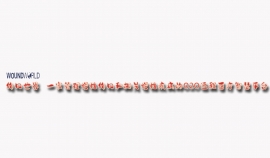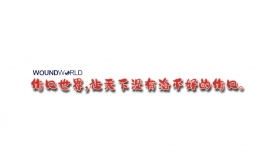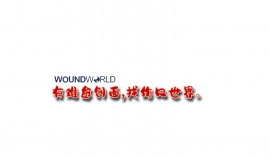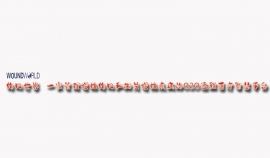文献精选
徐垄,柴琛,滕永军
兰州大学第一医院普外科,甘肃兰州730000
摘要:对表皮干细胞的特征、亚群、调控通路、微环境、与皮肤肿瘤的关系及临床应用作一综述,总结近年来表皮干细胞的最新研究进展,为进一步研究提供思路和研究方向。
关键词:表皮干细胞;增殖;分化;信号通路;皮肤肿瘤,临床应用
中图分类号:R6
文献标识码:A
doi:10.13885/j.issn.1000—2812.2017.01.013
收稿日期:2016—12-03
基金项目:甘肃省卫生行业科研计划项目(GSWST2011-05)
作者简介:柴琛,博士,主任医师,研究方向为创伤愈合,e-mail:chasechai@126.com,通信联系人
滕永军,博士,主任医师,研究方向为创伤愈合,e—mail:Tengyj@lan.edu.cn,共同通信联系人
Epidernal stem cell:a new hope for cell therapy
Xu Kun,Chai Chen,Teng Yong-jun
Department ofGeneral Surgery,First Hospital ofLanzhou University,Lanzhou 730000,China
Abstract:In this paper,we reviewed the characteristics,microenvironment,subpopulation,regulatory path—ways,clinical applications of epidermal stem cells(ESCs)and the relationship between skin cancer and ESCs,and summarized recent advances in ESCs to provide some ideas andresearch directions for relevant researchers.
Keywords:epidermal stem cells;proliferation;differentiation;signaling pathway;skin cancer;clinical application
蓝蔚,刘德伍,毛远桂
南昌大学第一附属医院烧伤中心,江西省南昌市330006
蓝蔚★,男,1979年生,江西省大余县人,畲族,南昌大擘在读硕士,主要从事烧伤创面修复与皮肤组织工程方面的研究。lan_wei@163.Com
通讯作者:刘德伍,博士,主任医师,博士生导师,南昌大学第一附属医院烧伤中心,江西省南昌市330006dewuliu@126.com
国家自然科学基金(30560058)*:江西省科技厅重大科技招标项目(200604)*:江西省教育厅科研项目(赣教技字『2005】187)+;江西省卫生厅科研项目(20041038)*
中图分类号:R394.2文献标识码:A 文章编号:1673.8225 (2008)25.049364)5
收稿日期:20cr7.10.19 修回日期:2008-02.28 (07-50-10-5643/ZS●Y)
Centre of Bums,the First Affiliated Hospital of Nanchang University,Nanchang 330006. Jiangxi Province,China
Lan Wei★.Smdyiag for ma.qter’s degree, Centre of Burns,the First Amhated Hospital of Nanchang University,Nanchang 330006, Jiangxi Province。China Lan wei@163.Com
Correspondelice to: Liu De-wu,Doctor, Chief physician, Tutor of doctor, Centre of Burns,the First Affiliated Hospital of Nanchang University,Nanehang 330006,liangxi Province.Cbina dewuliu@126.tom
Supported by:the National Natural Science Foundation of China.No.30560058+:the Great Invited Tenders Foundation of Jiangxi Provincial Science and Technology Bureau. No.200604*:the Science Research Foundation of Jiangxi Provincial Education Bureau, No 2005一187+:the Science Research Foundation of Jiangxi Provincial Health Bureau,No, 20041038*
Received:2007..10..19 Accepted:2008-02-28
Abstract:Epidermal stem cell is a specific stem cell.which locates in epidermal basaI layer and the eminence of hair follicle.Epidermal stem cells have the characteristic of the undifferentiated cells in the morphology.and are tile biological source of the skin and its subsidiary in the development.repair and reconstruction.At present.the identification markers of epidermal stem cell include integrin,keratin.proliferating cell nuclear antigen,genic material and connectin.The proliferation and differentiation of epidermal stem cell arc influenced by many factors.such as integrin.signal transduction pathway and cytokines.Current researches of epidermal stem cell in skin wound healing,building of tissue.engineered skin,gene therapy and other areas have made great progress,but there are still many problems to wait for solving,such as establishing an absolutely recognized specific marker,the directed differentiation from embryonic stem cells to epidermal stem cells.how to mainrain its stem cell characteristics and induce large amplification.whether it will have a malignant transformation in clinical application.
Lan,W. Lu DW,Mao YG.Biological characteristics of epidermal stem cells nerves.Zhongguo Zuzhi Gongcheng Yanjiu yu Linchuang Kaugfu 2008;12(25):4936-4940(China) [wWW.zglckf.com/zglckf/ejoumal/upfiles/08—25/25k一4936(ps).pdf]
摘要:表皮干细胞是来源于胚胎外胚层皮肤组织的专能干细胞,丰要分布于表皮基底层和毛囊隆突部,形态学上具有未分化细胞的特征,在生物学方面是皮肤及其附属器发牛、修复、改建的源泉。现阶段对表皮T细胞的鉴定需采用整合素、角蛋白、增殖细胞核抗原、基因物质及连接蛋白等多个标记物,其增殖分化受整合素、信弓转导通路及细胞冈子等冈素影响。
目前表皮干细胞研究在皮肤创面修复、组织工程皮肤的构建、基因治疗等方面均L二取得显著进展,但仍存在如何确立一种绝对公认的特异标记物、从胚胎T-细胞向表皮干细胞分化培养过程中怎样维持其干细胞特性以及快速大量扩增、应用于临床是否会恶性变而产生医疗安全等急需解决的问题。
关键词:表皮干细胞;定位:标记物;增殖分化;综述文献
蓝蔚,刘德伍,毛远桂.表皮干细胞生物学特性研究现状.[J】中国组织工程研究与临床康复,2008,12(25):4936—4940
【www.zglckf.conffzglckf/ejournal/upfiles/08—25/25k一4936(ps).pdf]
刘惠玲1,伍明俊2 9陈关霞1,李美蓉1,伍志强1,赵亚力1,韩为东1,孙晓艳1
1解放军总医院基础医学所,北京100853;2中国医学科学院输血研究所血液免疫研究中心,成都 610081
摘要:目的摸索并建立表皮干细胞Oct4基因的非转基因诱导方法。方法采用RT—PCR方法,检测经6一氨基己酸刺激48h后表皮干细胞Oet4基因的转录水平。结果“氨基己酸能有效激发表皮干细胞Oct4基因的转录。结论RT—PCR方法检测表皮干细胞Oct4基因转录水平变化的准确度高、重复性好,实验步骤简单,是初步筛选诱导基凶转录表达小分子化合物的实用方法。
关键词:6一氨基己酸;表皮干细胞;Oct4
中图分类号:R 644
文献标识码:A
文章编号:1005一l 139(201 1)01-0070-03
收稿日期:2010—04—20
修回日期:2010-05—06
基金项目:国家自然科学基金项目(30730090,30901564);北京市科技新星计划资助项目(2008853)Supported by the National Natural Science Foundation of China(30730090,30901 564)
作者简介:刘惠玲,女,本科,实验师。Email:liu hui_ling垣黼u.㈣
6-aminohexanoic acid activates expression of Oct4 gene in human epidermic stem cells LIU Hui—lin91。WU Ming-jun2,CHEN Mei.xial,LI Mei—ron91,WU Zhi·qian91,ZHAO Ya—lil,HAN Wei.don91,SUN Xiao-yanl 1Institute of Basic Medical Science,Chinese PLAGeneral Hospital,Beijing 100853,China;2Research Center of Blood Immunology, Institute of Blood Transfusion,Chinese Academy ofMedical Sciences,Chengdu 610081,Sichuan Province,China The first author:LIU Hui-ling.Emall:liu_hui—ling@sohu.com
Abstract:Objective To develop the non—transgenic method for inducing transcription of oct4 gene in epidermic stem cells.
Methods Rr-PCR was performed to measure the transcription level of oct4 gene in epidermic stem cells 48h after activated by 6.aminohexanoic acid.Results 6.aminohexanoic acid effectively activated the transcription of OCt4 in epidermic stem ceils.
Conclusion RT-PCR Can accurately and repeatedly detect the transcription level of oct4 gene in epidermic stem ceils.and iS thUS a simple and practical method for screening the potential small molecular compounds expressed in inducing transcription genes.
Key words:6.Aminohexanoic Acid;Epidermal Stem Cells;Oct4
王庚新 1 ,张春玲 2* ,赵 伟 2 ,陈 露 2 ,邸铁涛 2 ,张 云 1 ,王艳辉 1 ,刘海艳 1
- 贵州中医药大学,贵州 550002;
- 贵州中医药大学第二附属医院
基金项目 国家自然科学基金资助项目,编号:81960805;贵州省研究生教育创新计划项目,编号:黔教合 YJSCXJH(2020)161
作者简介 王庚新,硕士研究生在读




